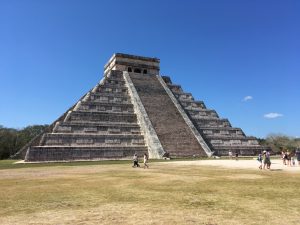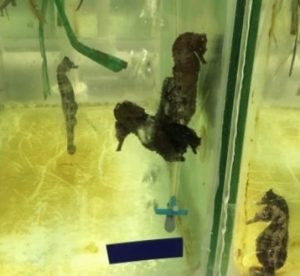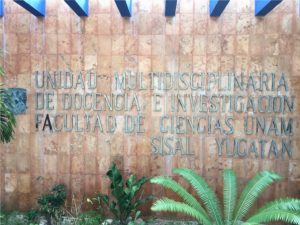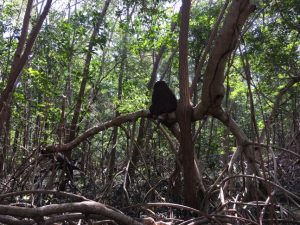Mirco Bundschuh shares his experiences after coming back from an interesting visit at a field office of the Universidad Nacional Autónoma de México (UNAM) as well as the Center for Research and Advanced Studies of the National Polytechnic Institute (CINVESTAV) in Yucatan, Mexico.
After a 12-h direct connection from Frankfurt to Cancun in Yucantan, I was quite shocked: more than 30°C difference in temperature (in the right direction) together with clear sky. What a nice change to the situation back home. With my host and good friend Gabriela Rodriguez-Fuentes and her partner Rafa, I had the chance for a short visit at Chichen Itza on our 4-h ride from Cancun to Merida. With these two experts, we made the whole tour in roughly 2 hours – just before the sun cooked us…
During the coming days I gave a series of seminars and lectures. But maybe more interesting– I hope – are the impressions from the colleagues and research performed at UNAM and CINVESTAV. At UNAM in Sisal (roughly an hour from Merida) I could visit their impressive seahorse and octopus culture, which they use mainly for ecophysiological and behavioural research. At the same time, they are eager of involving other reseachers and expand on their research focus. Particularly with regards to the octopuses, there are some inital ideas for intensive collaborations on the edge of ecotoxicology (including stress biomarkers), physiology and behavour.
On top of these impressive opportunities, UNAM is working for years on the impact of chemical stressors in the Cenotes. What are Cenotes? As a consequence of a geology dominated by limestone, there are no surface water bodies in Yucatan and all freshwater is basically moved below-ground forming an impressive karstic environment. Cenotes are pits within a soil resulting from a collaps of the limestone as a consequence of its dissolution due to the aquifer. Hence, Cenotes can be accessed and used for multiple purposes including spare time but also industrial activities. Those systems are thus potentially experiencing chemical exposure, which is quantified and assessed for their biological effects at UNAM.
Colleagues at CINVESTAV are working amongst others also on effects of oil residues on phytoplankton and the ecology of mangroves in the Gulf of Mexico in general. Thereby they aim at supporting the management and restoration of these mangrove ecosystems. As you can imagine, the fact that mangroves provide quite some organic matter (mainly leaves) to marine systems that needs to be broken down to make their energy and nutrients available to the wider food web, made this topic quite a fruitful conversation.
All in all, I met an interesting group of researchers that is open for scientific collaborations in diverse topics directly or indirectly related to ecotoxicology in a freshwater but also marine environment. This fruitful exchange would not have been possible without the kind invitation by the director of the School of Chemistry at UNAM, Prof. Jorge Vazquez Ramos, and the support by my wonderful host Prof. Gabriela Rodriguez-Fuentes, which I am very greatful for.
Now it is on us to make use of these wonderful possibilities.





